THE REAL "UNHOLY THREE":
Charles Albert Browning, Jr. aka: Tod Browning.
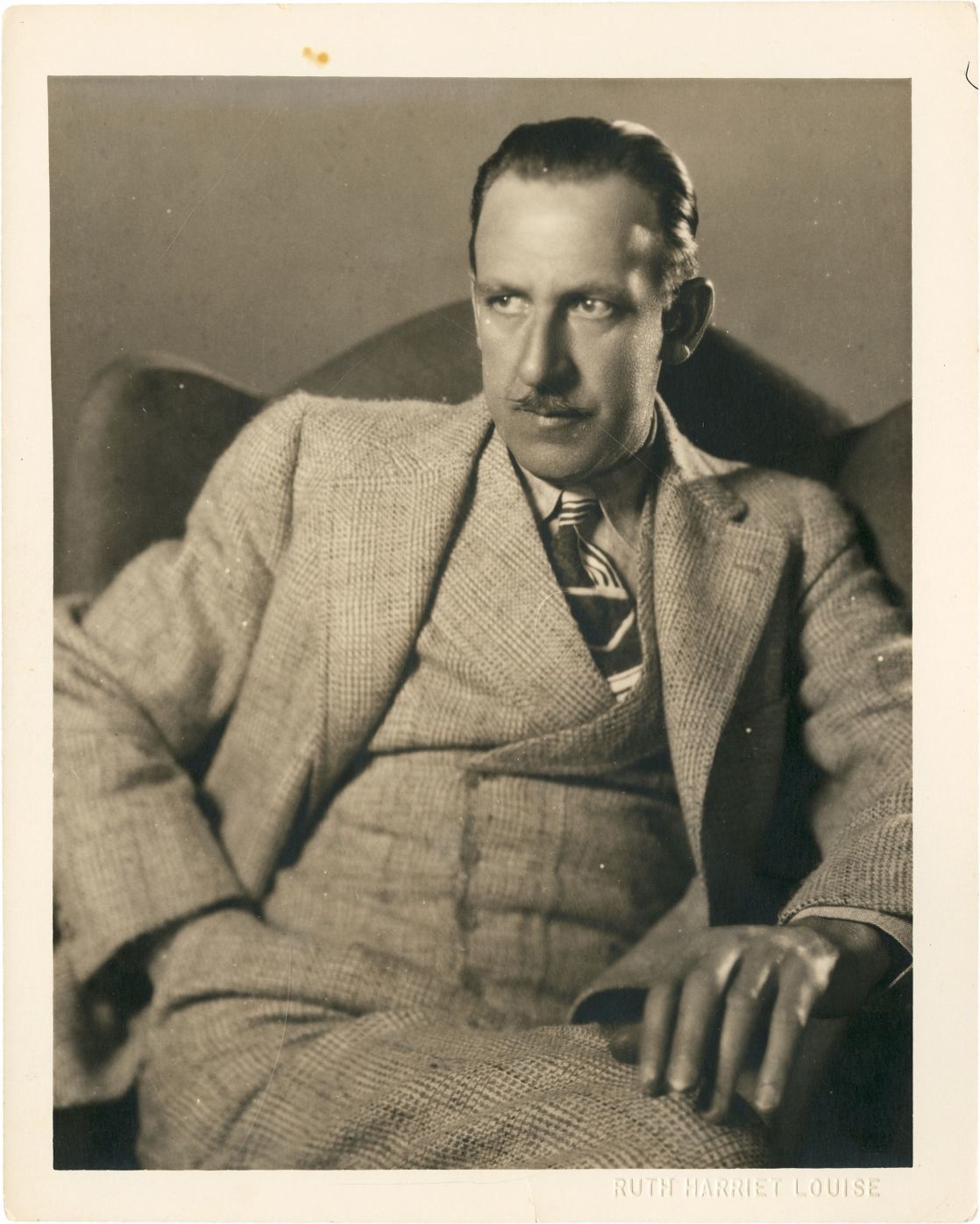
Tod Browning came from a very wealthy family living in Louisville, Kentucky. His Uncle was a famous baseball player for the "Louisville Eclipse/Colonels" during the 1880's. At the age of 16 Charles Albert Browning, Jr. ran away and joined the circus. The circus and side shows would become a regular staple in many of Browning's motion pictures.
He learned the motion picture trade from another Louisville, Kentucky native D.W. Griffith while in New York City Which was the center of the Silent Film Industry, at the time, and in 1913 moved with Griffith from the East to the budding movie colony of "Hollywood", California.
My article on the creation of "Hollywood Myth" entitled: "Hollywood: Segregated Housing, Motion Picture Studios and Movie Palaces" can be read at:
http://www.bewaretheblog.com/2019/04/hollywood-segregated-housing-motion.html
Leonidas Frank Chaney aka: Lon Chaney

Lon Chaney's parents were both deaf and his maternal grandfather founded the "Colorado School for the Education of Mutes" now the "Colorado School for the Deaf and Blind" in 1874. The one thing Universal Studios got right in their "Hollywood Biography" of Chaney, 1957's "The Man of a Thousand Faces" starring James Cagney, was the fact that the young man learned pantomime from communicating with his parents and others.
Lon became a contract player for Universal Pictures in 1912, while Browning was still in New York, doing bit parts in Silent Films.
Bela Ferenc Dezo Blasko aka: Bela Lugosi
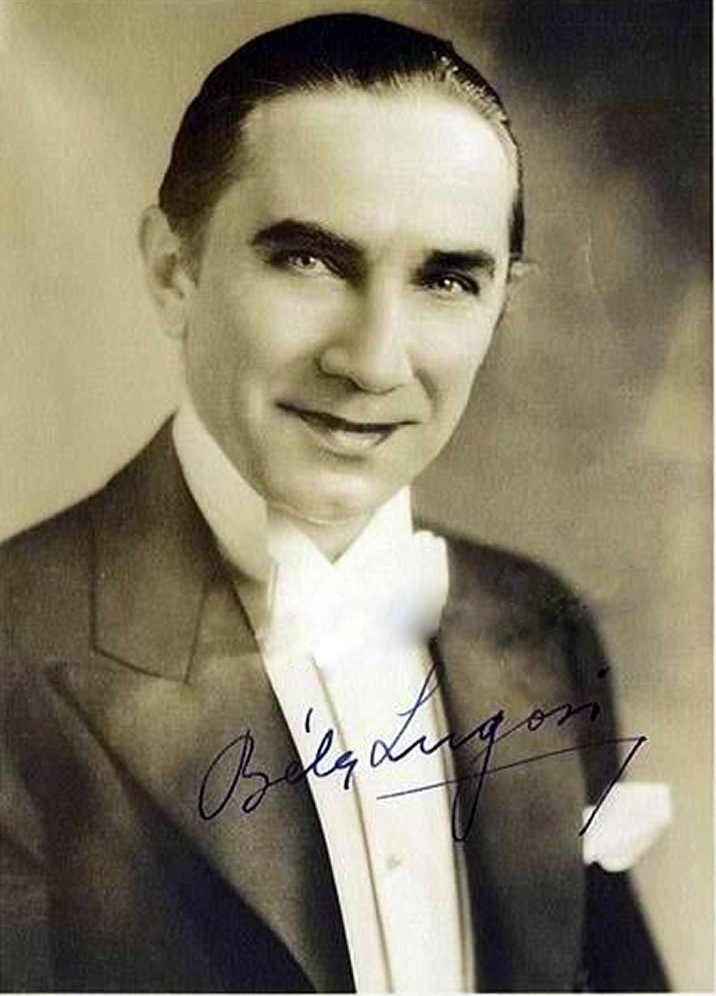
The future Bela Lugosi based his acting last name, in 1903, on the town he was born in Lugos, Hungry. It is now Lugoj, Romania. His first motion picture was the Hungarian film from 1917 "Az Ezredes (The Colonel)". Lugosi left his native country after the failed "Hungarian Communist Revolution of 1919" and went to Germany, He would act in several "Weimar Republic" German motion pictures, but in 1920 he left for the United States. Lugosi's first American motion picture was the 1923 spy film "The Silent Command". In 1927 Bela Lugosi appeared on the Broadway stage in a production of Bram Stoker's "Dracula".
TOD BROWNING AND LON CHANEY
When a person arrived in the early Hollywood Silent Film Industry. You became a "Jack of All Trades" as the saying goes. Both Browning and Chaney have credits as Writers, Actors and Directors. Browning also had credits as a Producer and Camera operator. While Chaney, this may come as a surprise, only has four motion pictures as a make-up artist and those without on screen credit for his work. However, these films are 1923's "The Hunchback of Notre Dame", 1925's "The Phantom of the Opera", 1927's "London After Midnight" and his last motion picture the 1930 remake of "The Unholy Three".
At the time the paths of Director Tod Browning and Actor Lon Chaney crossed. Browning had directed 30 full length feature films and 12 short subjects, While Chaney had appeared in 65 feature films and 82 short subjects.
Their first film together would be remade as Chaney's last on screen appearance five years later, but not with Browning as director. The picture was "The Unholy Three". It premiered in San Francisco on July 4, 1925 four months after Lon's "The Phantom of the Opera" did the same.
"The Unholy Three" was made for Metro-Goldwyn-Mayer.
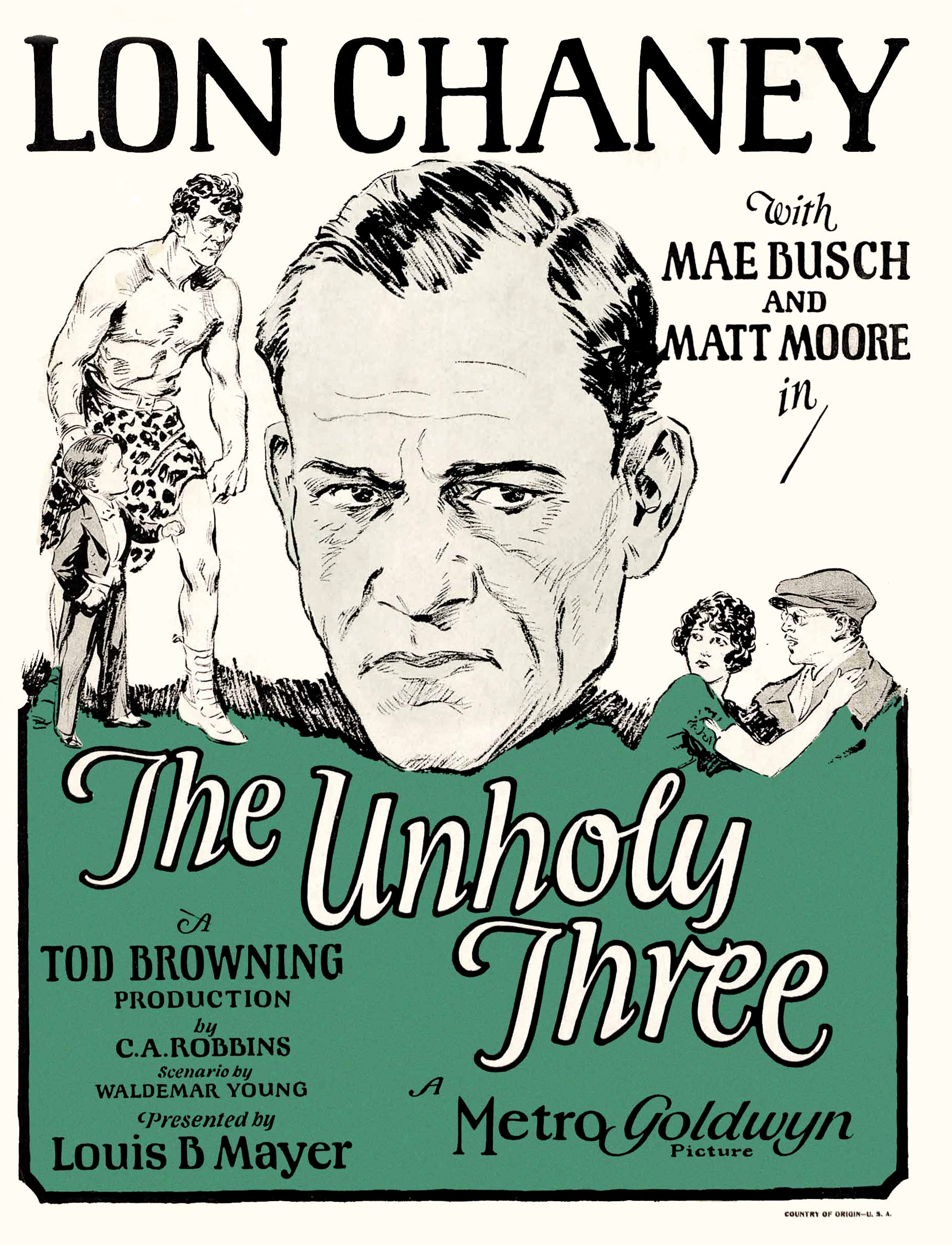
"The Unholy Three" tells the story of three circus performers who come together in an "Unholy" plan to become wealthy by a string of burglaries.

Above on the left Victor McLaglen as the strong man "Hercules". This was 9 years before his first motion picture, with Director John Ford, 1934's "The Lost Patrol" co-starring Boris Karloff.
Next to Victor McLaglen is 3 foot 3 inch actor Harry Earles as "Tweedledee". This was his first role and he would repeat it in the 1930 sound remake. Earles also appeared in Tod Browning's 1932 revenge story "Freaks" set in a circus side show.
The girl is Mae Bush as pickpocket "Rosie O'Grady". Bush had been acting since 1915 and would continue acting through 1946.
Lon Chaney was "Professor Echo" the brains of "The Unholy Three". As a disguise he dresses as an old lady and becomes his girlfriend "Rosie's" grandmother.

"The Unholy Three" was followed by another 8 motion pictures for actor Lon Chaney. Half of them were directed by Tod Browning. Those four films were:
"The Black Bird" a romantic crime drama released February 13, 1926.
"The Road to Mandalay" about a sea captain attempting to reunited with daughter 20 years after abandoning her as an infant. It was released June 28, 1926.
"The Unknown" released June 4, 1927 and set in a circus. Lon Chaney portrayed knife thrower "Alonzo the Armless" who uses his feet instead of his hands. A young Joan Crawford was his love interest "Nanon Zanzi".

Above 23 year old Joan Crawford and Lon Chaney.
This brings me to four Tod Browning feature and the first of the two motion pictures this article is about.
LONDON AFTER MIDNIGHT released December 3, 1927

The motion picture is considered lost. The last known copy of the film was destroyed in 1965 in a fire in "Vault #7" on the Metro-Goldwyn-Mayer Studio lot in Culver City, California. There is a 46 minute and 41 second recreation using the original screenplay and stills from the production made in 2002. The actual Tod Browning feature ran 65 minutes.
The scenario was based upon a published story by Browning entitled "The Hypnotist". It was written by the director and Waldermar Young. Young had worked with Tod Browning on 1925's "The Holy Three" and "The Mystic", 1926's "The Blackbird", 1927's "The Show" and "The Unknown". In 1932 Waldermar Young wrote the screenplays for Cecil B. DeMille's "The Sign of the Cross" and the H.G. Wells story "Island of Lost Souls".
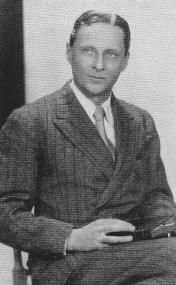
Above Waldermar Young at the time of his working with Tod Browning.
Silent movies had titles to tell an audience the dialogue that actors were speaking and clarify certain scenes. This was an art form in itself and for "London After Midnight" Metro-Goldwyn-Mayer assigned writer Joseph Farnham. He had been doing this work since 1918 along with film editing. For director Browning, Farnham had written the titles for 1926's "The Road to Mandalay", 1927's "The Show" and "The Unknown".

Above Joseph "Joe" Farnham.
The Cast:
Lon Chaney had two roles in the motion picture. One was that of "Professor Edward C. Burke". The "Professor" is identified on some titles as "Inspector Burke", because he works with Scotland Yard.

The above is a gag photo taken on the set. In the seat is Director Todd Browning. Attempting to hypnotize him is Lon Chaney as "Professor Burke" and standing is actor Conrad Nagel who portrayed "Arthur Hibbs". Nagel started acting in the 1918 silent version of Louisa May Alcott's "Little Women" and ended his acting career 47 years later in an episode of Richard Chamberlain's "Dr. Kildare" television series
The second role for Chaney is the one most associated with the feature and is that of "The Man in the Beaver Hat".
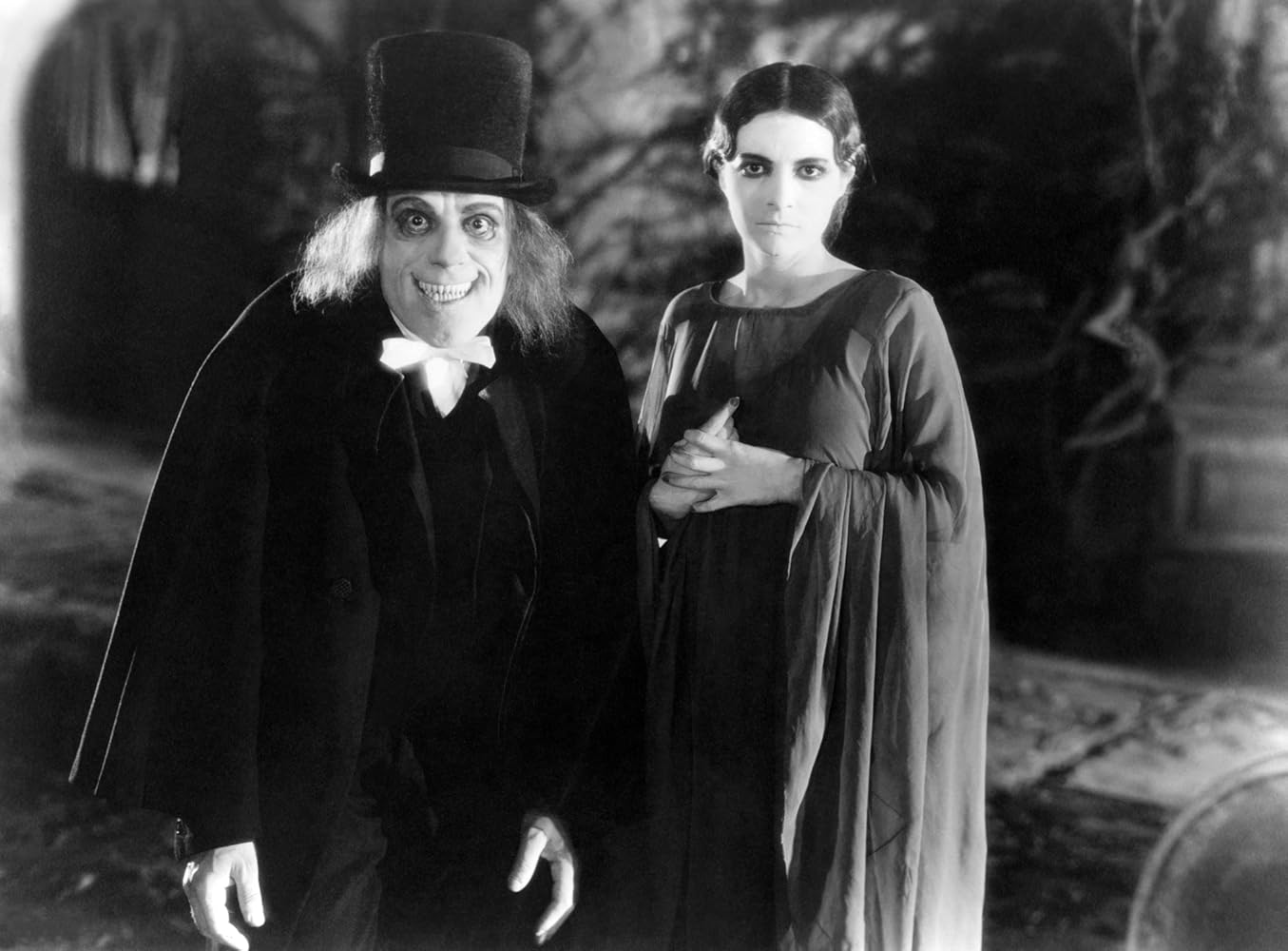
Above and below is Edna Tichenor as "Luna, the Bat Girl". Tichenor only had 11 on screen credits between 1923 and 1928 ending with Tod Browning's "West of Zanzibar".
Below left to right are Henry B. Walthall as "Sir James Hamlin", Chaney as "Professor Burke", Polly Moran as "Miss Smithson, the New Maid" and Marceline Day as "Lucille Balfour".
Walthall started acting in 1908 and would have 324 on screen roles by his final motion picture Tod Browning's 1936 "The Devil Doll". This was an odd role for Marceline Day although she did appear with John Barrymore in a drama. However, Day was known as a comedian and co-starred in several films with Buster Keaton and Harry Langdon.

Walthall started acting in 1908 and would have 324 on screen roles by his final motion picture Tod Browning's 1936 "The Devil Doll". This was an odd role for Marceline Day although she did appear with John Barrymore in a drama. However, Day was known as a comedian and co-starred in several films with Buster Keaton and Harry Langdon.

Very popular at the time was to reissue a novel with images from the motion picture that the novel was associated with, I had Bram Stoker's "Dracula" with scenes from the 1931 motion picture. The following are stills from the special movie printing of "London After Midnight" by Marie Coolidge-Rask.
The movie was known in the U.K. by Tod Browning's original story title "The Hypnotist", but I couldn't locate a photo of that title.
When "London After Midnight" played in Germany the title was "Um Mittnacht (At Midnight)".
At dinner events start to unfold. While speaking of the strange nocturnal neighbors of "Sir James". The discussion naturally turns to the "Suicide" of "Rodger Balfour" and the reminder that "Arthur Hibbs" was the only one, other than the Butler "Williams", in the "Balfour" house when he died. Also to "Burke", it appears there may be something, now, more to the relationship between "Lucille" and "Arthur".
After dinner in the garden "Burke" tells "Lucille" he believes her father was murdered and she needs to put her safety in his hand and do whatever he asks of her. He then protects her bedroom from the two vampires living in her old home with a plant called bat-thorn.
"Burke" next asks "Arthur" to come to his room for a little talk. In actuality he has just hypnotized the young man to recount what he saw the night of "Roger Balfour"s" death. After clearing him of any wrong doing "Burke"s tells him to go to sleep.

"Sir James Hamlin" finds his nephews room empty and encounters "Burke". The "Inspector" than lies that he's been waiting 3 hours to see "Hibbs" and the young man hasn't shown up. After "Sir James" leaves "Professor Burke" wakes "Arthur Hibbs" from his trance. "Arthur" thinks he fell asleep in "Burke's" room while reading waiting for him.
Just as everyone turns in for the night a shot rings out. "Burke" meets "Sir James" in the downstairs hall and says somebody was attempting to either kill him, or "Arthur". Next the Butler "Williams" shows up claiming he was awoken by the shot and came to investigate. However, he is wearing dress shoes, but "Burke" lets him go telling"Hamlin" he'll questioned the other later.
After the three return to their rooms. "Miss Smithson" has a visitor.
Even later that night "Professor Burke", "Sir James" and "Arthur" find "Lucille" and "Miss Smithson" missing and "Lucille's" bedroom ransacked.
The Vampire "Luna" has taken "Lucille" back to her old house.

"Arthur Hibbs" wants to call the police, but "Professor Burke" thinks there's no need as "Arthur" knows exactly where "Lucille" is. "Arthur" asks why is he being accused as the vampires may be killing "Lucille". He storms out and "Burke" tells "Sir James" that everything is working out just as the two planned. He gives the other his gun and tells him to go to the old house and ask for "Rodger Balfour". Then ads:
"Sir James" approaches the house and outside "The Man in the Beaver Hat" awaits him. "Hamlin" stares into the vampire's eyes and suddenly it's five years ago at "Rodger Balfour's" house. "Rodger Balfour" is telling "Sir James" that he has made him the "Executor of His Will". Happy to hear that "Sir James Hamlin" states that he wants to marry"Rodger's" daughter "Lucille". Her father is against it, because of how young she is. "Hamlin" rephrases his request to say he meant some years from now.
The audience now knows that the events they're seeing are in "Sir James Hamlin's" mind only. He sees "The Stranger" and thinks he's the real "Rodger". Observing the scene play out "Professor Burke" tells "Miss Smithson" that he always knew a killer could recreate their crime.
"Lucille Balfour" is dressed as she was back then and playing her role. It is now later that night and "Sir James" returns and points a gun at "Rodger Balfour" and tells him to dictate his "Suicide" note. After it's completed "Sir James Hamlin" murders his friend "Rodger Balfour", or it appears to the hypnotized man. The gun has blanks and "The Stranger" plays his role perfectly.
"Detective Burke" now knows how "Rodger Balfour" committed "Suicide" and ads that "Sir James" also planned to kill his nephew "Arthur Hibbs". So he could have "Lucille" and the estate to himself.
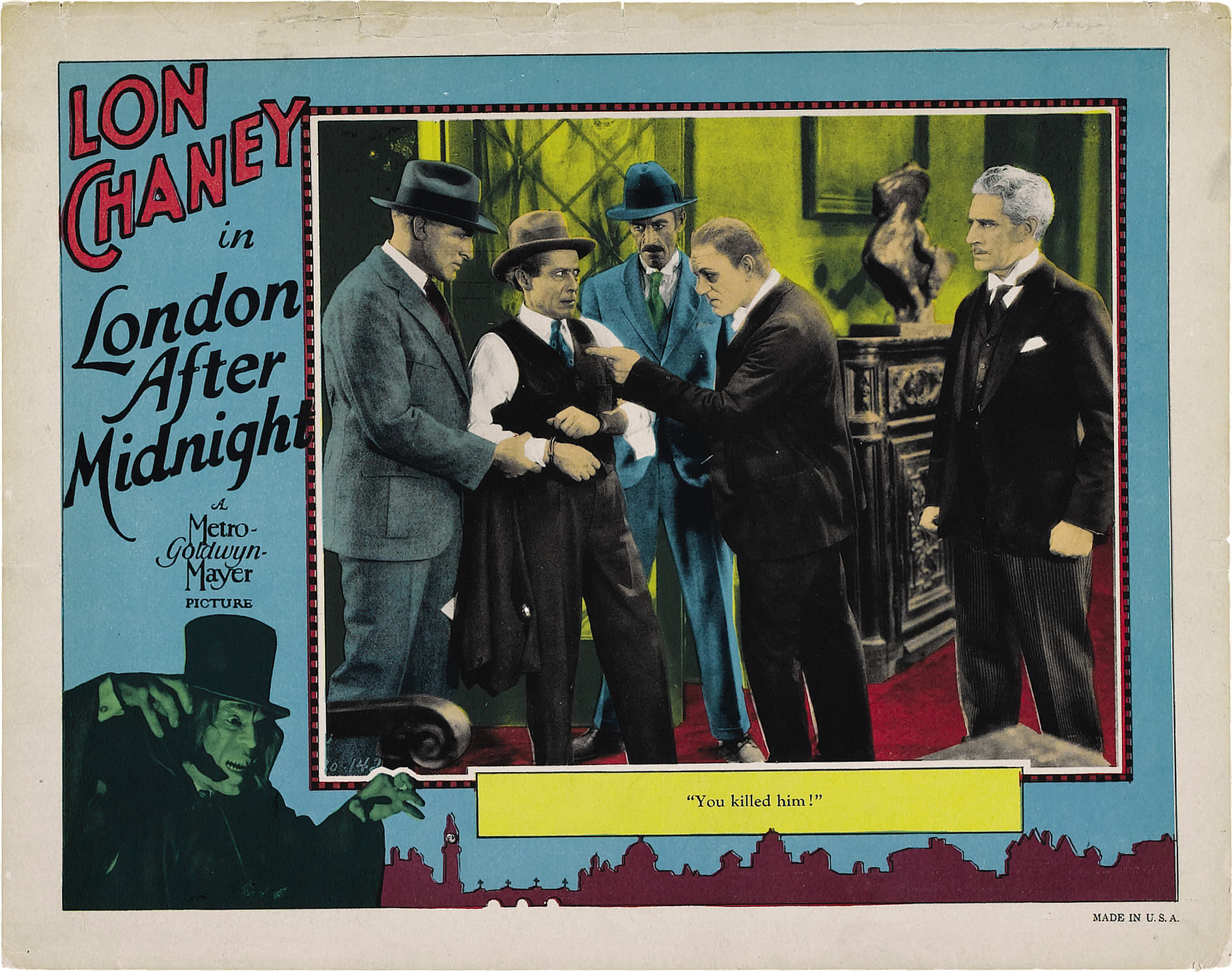
"Sir James Hamlin" is arrested and "Arthur" is let out of the locked room to start a life with "Lucille".
The audience now finds out that "Luna" was really an actress name "Lynette". Who has a stage act as "Luna the Bat Girl" and that "The Man in the Beaver Hat" was really "Professor Edward C. Burke".
On March 24, 1928 Lon Chaney and Tod Browning followed "London After Dark" by releasing "The Big City". Two other films with two other directors followed for the actor. Then Chaney and Browning released "West of Zanzibar" on November 24, 1928. That feature was followed by their last teaming "Where East is East" on May 4, 1929.
There would be one other film from another director "Thunder" released July 8, 1929 and then the Metro-Goldwyn-Mayer publicity department announced on July 12, 1930:
_02.jpg)
The Jack Conway directed "All Talking Picture" would be the first and last film that audiences would hear the voice of "The Man Of A Thousand Faces". One month later, on August 26, 1930, 47 year old Lon Chaney was dead. During the Winter of 1929 while filming "Thunder" he developed pneumonia. Which further developed into bronchial lung cancer as a result of the artificial snowflakes lodging in his throat.
TOD BROWNING AND BELA LUGOSI
Bela Lugosi had an acting career spanning 39 years and 118 actual motion picture appearances. His name is synonymous with Tod Browning's. Yet out of those 118 movies he worked with Browning only twice.
That first motion picture with Lugosi was only Tod Browning's third after Lon Chaney's 1929 "Where East Is East". He would only direct 6 more motion pictures, including the very controversial 1932 "Freaks". Which was set in his favorite setting a circus side show, and in 1939 Director Tod Browning retired from the motion picture business.
On February 12, 1931 the first of those two features premiered in New York City and became the Iconic Role Bela Lugosi would forever be associated with. Initially Producer Carl Laemmle, Jr., son of the owner and founder of Universal Pictures, wanted "Dracula" to be portrayed by either actors Paul Muni, Chester Morris, Ian Keith, John Wray, Joseph Schildkraut, Arthur Edmond Carewe, or William Courtney. All known film actors at the time and did not consider Lugosi. However, Bela was being seen in his Broadway Stage role with a touring company in Los Angeles. After agreeing only to $500 a week the actor was cast in the title role. Bela Lugosi's total pay for seven weeks work was $3,500 1931 dollars, or $58,462, 2019 dollars.
The screenplay was solely by Garrett Fort. He was one of the writers on 1931's "Frankenstein", but more importantly Fort, without credit, co-wrote that original 1924 Broadway play with Hamilton Deane and John L, Balderston. Except for the motion picture sets, especially of "Dracula's" castle, the sets used were like the stage play and the Tod Browning directed "Dracula" as if it were one.
One trivia point. Although Tod Browning's "Dracula" was a Pre-Production Code feature. Only the original New York audiences saw the actual ending that the Censors had Universal Pictures remove. It was a reverse of the Prologue for "Frankenstein". Where Edward Van Sloan came out between stage curtains to give it. In this film after the ending Van Sloan stepped out in an Epilogue and told the audience:
When "London After Midnight" played in Germany the title was "Um Mittnacht (At Midnight)".
In Argentina that title was still "LONDRES DESPUES DE MEDIA NOCHE (London After Midnight)"
The Basic Story:
For five years after the declared suicide of "Rodger Balfour", his house remained vacant. Now with the arrival of two new tenants in the "Balfour" house and "Sir James Hamlin's" passing servants, one night, describing them as "Vampires". "Professor/Inspector Edward C. Burke", the man who declared "Rodger Balfour" as a suicide is called back by "Sir James Hamlin" to investigate. When "Burke" arrives at the home of "Sir James". He finds "Lucille Balfour" now the ward of "Sir James" living there. Along with "Rodger Balfour's" faithful butler "Williams" and "Arthur Hibbs" the nephew of "Sir James". Additionally "Burke" meets "Lucille's" maid "Miss Smithson" and handyman "Hank".
At dinner events start to unfold. While speaking of the strange nocturnal neighbors of "Sir James". The discussion naturally turns to the "Suicide" of "Rodger Balfour" and the reminder that "Arthur Hibbs" was the only one, other than the Butler "Williams", in the "Balfour" house when he died. Also to "Burke", it appears there may be something, now, more to the relationship between "Lucille" and "Arthur".
After dinner in the garden "Burke" tells "Lucille" he believes her father was murdered and she needs to put her safety in his hand and do whatever he asks of her. He then protects her bedroom from the two vampires living in her old home with a plant called bat-thorn.
"Burke" next asks "Arthur" to come to his room for a little talk. In actuality he has just hypnotized the young man to recount what he saw the night of "Roger Balfour"s" death. After clearing him of any wrong doing "Burke"s tells him to go to sleep.

"Sir James Hamlin" finds his nephews room empty and encounters "Burke". The "Inspector" than lies that he's been waiting 3 hours to see "Hibbs" and the young man hasn't shown up. After "Sir James" leaves "Professor Burke" wakes "Arthur Hibbs" from his trance. "Arthur" thinks he fell asleep in "Burke's" room while reading waiting for him.
Just as everyone turns in for the night a shot rings out. "Burke" meets "Sir James" in the downstairs hall and says somebody was attempting to either kill him, or "Arthur". Next the Butler "Williams" shows up claiming he was awoken by the shot and came to investigate. However, he is wearing dress shoes, but "Burke" lets him go telling"Hamlin" he'll questioned the other later.
After the three return to their rooms. "Miss Smithson" has a visitor.
Even later that night "Professor Burke", "Sir James" and "Arthur" find "Lucille" and "Miss Smithson" missing and "Lucille's" bedroom ransacked.
The Vampire "Luna" has taken "Lucille" back to her old house.

"Arthur Hibbs" wants to call the police, but "Professor Burke" thinks there's no need as "Arthur" knows exactly where "Lucille" is. "Arthur" asks why is he being accused as the vampires may be killing "Lucille". He storms out and "Burke" tells "Sir James" that everything is working out just as the two planned. He gives the other his gun and tells him to go to the old house and ask for "Rodger Balfour". Then ads:
Whomever you meet stare straight into their face. Show no fear!At the her old home "Lucille" meets "The Stranger" playing the piano and seems to believes he is her father. While "Arthur Hibbs" attempts to save "Lucille" from the Vampires and climbs through an open window. He is captured and "Professor Burke" appears and orders that he be locked in a room and he'll deal with "Hibbs" later. "Lucille" is given instructions to carry out and she leaves and goes toward the home of "Sir James".
"Sir James" approaches the house and outside "The Man in the Beaver Hat" awaits him. "Hamlin" stares into the vampire's eyes and suddenly it's five years ago at "Rodger Balfour's" house. "Rodger Balfour" is telling "Sir James" that he has made him the "Executor of His Will". Happy to hear that "Sir James Hamlin" states that he wants to marry"Rodger's" daughter "Lucille". Her father is against it, because of how young she is. "Hamlin" rephrases his request to say he meant some years from now.
The audience now knows that the events they're seeing are in "Sir James Hamlin's" mind only. He sees "The Stranger" and thinks he's the real "Rodger". Observing the scene play out "Professor Burke" tells "Miss Smithson" that he always knew a killer could recreate their crime.
"Lucille Balfour" is dressed as she was back then and playing her role. It is now later that night and "Sir James" returns and points a gun at "Rodger Balfour" and tells him to dictate his "Suicide" note. After it's completed "Sir James Hamlin" murders his friend "Rodger Balfour", or it appears to the hypnotized man. The gun has blanks and "The Stranger" plays his role perfectly.
"Detective Burke" now knows how "Rodger Balfour" committed "Suicide" and ads that "Sir James" also planned to kill his nephew "Arthur Hibbs". So he could have "Lucille" and the estate to himself.

"Sir James Hamlin" is arrested and "Arthur" is let out of the locked room to start a life with "Lucille".
The audience now finds out that "Luna" was really an actress name "Lynette". Who has a stage act as "Luna the Bat Girl" and that "The Man in the Beaver Hat" was really "Professor Edward C. Burke".
On March 24, 1928 Lon Chaney and Tod Browning followed "London After Dark" by releasing "The Big City". Two other films with two other directors followed for the actor. Then Chaney and Browning released "West of Zanzibar" on November 24, 1928. That feature was followed by their last teaming "Where East is East" on May 4, 1929.
There would be one other film from another director "Thunder" released July 8, 1929 and then the Metro-Goldwyn-Mayer publicity department announced on July 12, 1930:
_02.jpg)
The Jack Conway directed "All Talking Picture" would be the first and last film that audiences would hear the voice of "The Man Of A Thousand Faces". One month later, on August 26, 1930, 47 year old Lon Chaney was dead. During the Winter of 1929 while filming "Thunder" he developed pneumonia. Which further developed into bronchial lung cancer as a result of the artificial snowflakes lodging in his throat.
TOD BROWNING AND BELA LUGOSI
Bela Lugosi had an acting career spanning 39 years and 118 actual motion picture appearances. His name is synonymous with Tod Browning's. Yet out of those 118 movies he worked with Browning only twice.
That first motion picture with Lugosi was only Tod Browning's third after Lon Chaney's 1929 "Where East Is East". He would only direct 6 more motion pictures, including the very controversial 1932 "Freaks". Which was set in his favorite setting a circus side show, and in 1939 Director Tod Browning retired from the motion picture business.
On February 12, 1931 the first of those two features premiered in New York City and became the Iconic Role Bela Lugosi would forever be associated with. Initially Producer Carl Laemmle, Jr., son of the owner and founder of Universal Pictures, wanted "Dracula" to be portrayed by either actors Paul Muni, Chester Morris, Ian Keith, John Wray, Joseph Schildkraut, Arthur Edmond Carewe, or William Courtney. All known film actors at the time and did not consider Lugosi. However, Bela was being seen in his Broadway Stage role with a touring company in Los Angeles. After agreeing only to $500 a week the actor was cast in the title role. Bela Lugosi's total pay for seven weeks work was $3,500 1931 dollars, or $58,462, 2019 dollars.
The screenplay was solely by Garrett Fort. He was one of the writers on 1931's "Frankenstein", but more importantly Fort, without credit, co-wrote that original 1924 Broadway play with Hamilton Deane and John L, Balderston. Except for the motion picture sets, especially of "Dracula's" castle, the sets used were like the stage play and the Tod Browning directed "Dracula" as if it were one.
One trivia point. Although Tod Browning's "Dracula" was a Pre-Production Code feature. Only the original New York audiences saw the actual ending that the Censors had Universal Pictures remove. It was a reverse of the Prologue for "Frankenstein". Where Edward Van Sloan came out between stage curtains to give it. In this film after the ending Van Sloan stepped out in an Epilogue and told the audience:
Just a moment, ladies and gentlemen! A word before you go. We hope the memories of Dracula and Renfield won't give you bad dreams, so just a word of reassurance. When you get home tonight and the lights have been turned out and you are afraid to look behind the curtains — and you dread to see a face appear at the window — why, just pull yourself together and remember that after all, there are such things as vampires!
However, this article is concerned with that second motion picture with Bela Lugosi directed by Tod Browning. Between "Dracula" and that feature film Lugosi appeared on screen 19 times.
MARK OF THE VAMPIRE was released April 26, 1935
The released movie was also known as "Vampires of Prague". When the film was released to general audiences Metro-Golden-Mayer had it edited to 60 minutes. Just as "London After Midnight" is considered a "Lost Film". The original preview audience running time of "Mark of the Vampire" is rumored to have been closer to 80 minutes, but, if true, that footage is also lost. Only the working screenplay exists and that's not the original either.
That original screenplay was written by Guy Endore. In 1933 novelist Endore would write "The Werewolf of Paris". To Werewolf lore that novel equates to the same status as Bram Stoker's 1897 "Dracula". Along with Garrett Fort, Guy Endore wrote the screenplay for Tod Browning 1936 "The Devil Doll", in 1945 Endore wrote the screenplay for Robert Mitchum's on screen debut "The Story of G.I. Joe" and was nominated for an Academy Award. In 1961 he adopted his novel "Werewolf of Paris" into the Hammer Studio's feature film "Curse of the Werewolf". However, as Guy Endore was "Blacklisted", his name was removed from the picture's credits. Actual Communist Endore's story is very interesting and may be read at:
http://www.bewaretheblog.com/2015/12/guy-endore-communism-in-motion-picture.html

Above Guy Endore
Look all you want and the credits for "Mark of the Vampire" never mention Tod Browning's story "The Hypnotist", or the names Waldermar Young and Joseph W. Farnham. However, the film is considered a remake of Browning's 1927 "London After Midnight". Although the names of the characters are different and the setting moved to Prague.
More on the running time controversy and Guy Endore's probable original screenplay after I discuss the way "MGM" released the motion picture.
The Cast:
Lionel Barrymore was "Dr. Zelen". Barrymore had been acting in film since 1905. In 1929 he portrayed Jules Verne's "Prince Dakkar" aka: "Captain Nemo" in the hybrid, part silent, part talkie, "The Mysterious Island". In 1932 he was "Rasputin", his brother John was "Czar Nicholas" and his sister Ethel was the "Czarina Alexandra" in "Rasputin and the Empress" and in 1936 he starred in Tod Browning's "The Devil Doll".

Above Lionel Barrymore as "Professor Zelen" and Elizabeth Allan as "Irene Borotyn".
This was Elizabeth Allen's 24th role and previously she starred in the 1932 version of "The Lodger" about "Jack the Ripper". Allen co-starred with Robert Montgomery in 1934's "The Mystery of Mr. X" and right before this film portrayed "Mrs. Coperfield" in the 1935 version of Charles Dicken's "David Coperfield".
Bela Lugosi was "Count Moria".
Lionel Atwill was "Inspector Neumann". At this time Atwill had already been seen in the first two all Technicolor Horror movies, both co-starring with Fay Wray, 1932's "Dr. X" and 1933's "The Mystery of the Wax Museum". Which would be remade in 3-D as 1953's "House of Wax" with Vincent Price in the Atwill role.
MARK OF THE VAMPIRE was released April 26, 1935
The released movie was also known as "Vampires of Prague". When the film was released to general audiences Metro-Golden-Mayer had it edited to 60 minutes. Just as "London After Midnight" is considered a "Lost Film". The original preview audience running time of "Mark of the Vampire" is rumored to have been closer to 80 minutes, but, if true, that footage is also lost. Only the working screenplay exists and that's not the original either.
That original screenplay was written by Guy Endore. In 1933 novelist Endore would write "The Werewolf of Paris". To Werewolf lore that novel equates to the same status as Bram Stoker's 1897 "Dracula". Along with Garrett Fort, Guy Endore wrote the screenplay for Tod Browning 1936 "The Devil Doll", in 1945 Endore wrote the screenplay for Robert Mitchum's on screen debut "The Story of G.I. Joe" and was nominated for an Academy Award. In 1961 he adopted his novel "Werewolf of Paris" into the Hammer Studio's feature film "Curse of the Werewolf". However, as Guy Endore was "Blacklisted", his name was removed from the picture's credits. Actual Communist Endore's story is very interesting and may be read at:
http://www.bewaretheblog.com/2015/12/guy-endore-communism-in-motion-picture.html

Above Guy Endore
Look all you want and the credits for "Mark of the Vampire" never mention Tod Browning's story "The Hypnotist", or the names Waldermar Young and Joseph W. Farnham. However, the film is considered a remake of Browning's 1927 "London After Midnight". Although the names of the characters are different and the setting moved to Prague.
More on the running time controversy and Guy Endore's probable original screenplay after I discuss the way "MGM" released the motion picture.
The Cast:
Lionel Barrymore was "Dr. Zelen". Barrymore had been acting in film since 1905. In 1929 he portrayed Jules Verne's "Prince Dakkar" aka: "Captain Nemo" in the hybrid, part silent, part talkie, "The Mysterious Island". In 1932 he was "Rasputin", his brother John was "Czar Nicholas" and his sister Ethel was the "Czarina Alexandra" in "Rasputin and the Empress" and in 1936 he starred in Tod Browning's "The Devil Doll".

Above Lionel Barrymore as "Professor Zelen" and Elizabeth Allan as "Irene Borotyn".
This was Elizabeth Allen's 24th role and previously she starred in the 1932 version of "The Lodger" about "Jack the Ripper". Allen co-starred with Robert Montgomery in 1934's "The Mystery of Mr. X" and right before this film portrayed "Mrs. Coperfield" in the 1935 version of Charles Dicken's "David Coperfield".
Bela Lugosi was "Count Moria".
Lionel Atwill was "Inspector Neumann". At this time Atwill had already been seen in the first two all Technicolor Horror movies, both co-starring with Fay Wray, 1932's "Dr. X" and 1933's "The Mystery of the Wax Museum". Which would be remade in 3-D as 1953's "House of Wax" with Vincent Price in the Atwill role.
Jean Hersholt was "Baron Otto von Zinden". Danish American character actor Hersholt started in silents in his native Denmark in 1906. He came to the United States around 1913 and appeared in a variety of roles, but mostly what could be described as "Shady Characters". Prior to this film Hersholt had appeared in the 1930 Horror Mystery "The Cat Creeps". In 1932 he was in "The Mask of Fu Manchu" starring Boris Karloff and Myrna Loy. After "Mark of the Vampire" he is best remembered as Shirley Temple's grandfather in the 1937 version of "Heidi".

Henry Wadsworth is "Fedor Vincente". Wadsworth acted between 1929 and 1945 for a total of only 22 films. He oured with the USO during World War 2 and became a Union Administrator and President of the AFL's Film Council afterwards and the reason he retired from films.

Above Elizabeth Allen and Henry Wadsworth.
Donald Meek played "Dr. Doskil". Meek is probably best known to fans of director John Ford and John Wayne as "Samuel Peacock" in 1939's "Stagecoach". He also played Walter Pidgeon's friend "Beeswax Bartholomew" in a series of "Nick Carter" movie mysteries.
Above Donald Meeks and Lionel Atwill.
Carroll "Carol" Borland was "Luna the Bat Girl". Borland is forever associated with this film and for inspiring Maila Nurmi's "Vampira" look and costume. Prior to this film she was in a 1933 short and after this picture she only appeared on screen three more times through 1985.
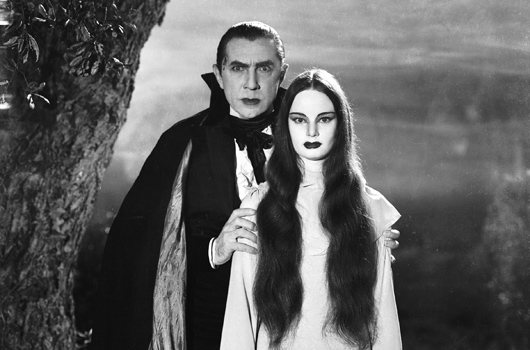
Above Bela Lugosi and Carol Borland.
Holmes Herbert is "Sir Karell Borotyn". Herbert had been acting since 1915 and Horror fans know him as "Dr. Lanyard" in the 1931 version of Robert Lewis Stevenson's "Dr. Jekyll and Mr. Hyde" starring Fredric March. In 1933 he was in the cast of "The Mystery of the Wax Museum" and also "The Invisible Man". In 1935 Holmes Herbert was also in the Errol Flynn and Oliva De Havilland "Captain Blood".

Henry Wadsworth is "Fedor Vincente". Wadsworth acted between 1929 and 1945 for a total of only 22 films. He oured with the USO during World War 2 and became a Union Administrator and President of the AFL's Film Council afterwards and the reason he retired from films.

Above Elizabeth Allen and Henry Wadsworth.
Donald Meek played "Dr. Doskil". Meek is probably best known to fans of director John Ford and John Wayne as "Samuel Peacock" in 1939's "Stagecoach". He also played Walter Pidgeon's friend "Beeswax Bartholomew" in a series of "Nick Carter" movie mysteries.
Above Donald Meeks and Lionel Atwill.
Carroll "Carol" Borland was "Luna the Bat Girl". Borland is forever associated with this film and for inspiring Maila Nurmi's "Vampira" look and costume. Prior to this film she was in a 1933 short and after this picture she only appeared on screen three more times through 1985.

Above Bela Lugosi and Carol Borland.
Holmes Herbert is "Sir Karell Borotyn". Herbert had been acting since 1915 and Horror fans know him as "Dr. Lanyard" in the 1931 version of Robert Lewis Stevenson's "Dr. Jekyll and Mr. Hyde" starring Fredric March. In 1933 he was in the cast of "The Mystery of the Wax Museum" and also "The Invisible Man". In 1935 Holmes Herbert was also in the Errol Flynn and Oliva De Havilland "Captain Blood".
Above Holmes Herbert with Bela Lugosi
A Summary of the MGM 60 Minute Screenplay as Released
Comparing the 1927 and 1935 screenplays, if this was really a remake. Besides the character name changes and the location change. One major immediate difference is that Lon Chaney's "Professor Edward C. Burke" aka: "Detective Burke" aka: "The Man in the Beaver Hat" has now become three separate roles played by three different actors.
Lionel Barrymore is "Professor Zelen", Lionel Atwill is "Police Inspector Neuman" and Bela Lugosi is "Count Mora".
The story starts with the discovering of the body of "Sir Karell Borotyn" in the family castle with two tiny puncture marks at his jugular vein. The attending physician, "Dr. Doskil", and "Sir Karell's" closest friend, "Baron Otto von Zinden", immediately suspect this is the return of the legendary Prague Vampire "Count Mora" and his daughter "Luna".
However, "Police Inspector Neumann" believes otherwise and is not one to believe local superstitions about the living dead. He was raised in Prague and knows all the tales of "Count Mora" and his daughter "Luna".
"Inspector Neumann" starts his own investigation of possible suspects starting with "Fedor Vincente". Who would gain a large sum of money by marrying "Irena Borotyn". As once her father was dead and his estate would pass to her. "Irene" does not believe "Fedor" would have anything to do with her father's death.

The Inspector next questions "Baron Otto" who has become the underage "Irena's" guardian and controller of the Estate. "Neumann" moves to "Dr. Doskil's" office and questioning of a local innkeeper. Who also believes that "Count Mora" and "Luna" are real and claims to have seen them as bats.
One year now passes without any conclusion by "Inspector Neumann" in the death of "Sir Karell Borotyn". The idea that he was killed by "Count Mora" and his daughter remain. "Irena Borotyn" now lives in another house near the castle. The "Borotyn" castle is up for sale as she does not want to live in the place her father died in.
By now the famous Occult and Vampire expert "Professor Zelen" has heard about the return of "Count Mora" and his daughter. He goes to "Inspector Neumann" expressing his own belief that the Count is real and is a danger to "Irena". He also talks to "Baron Otto", "Fedor" and "Dr. Doskil" and of course "Irena" about his belief.
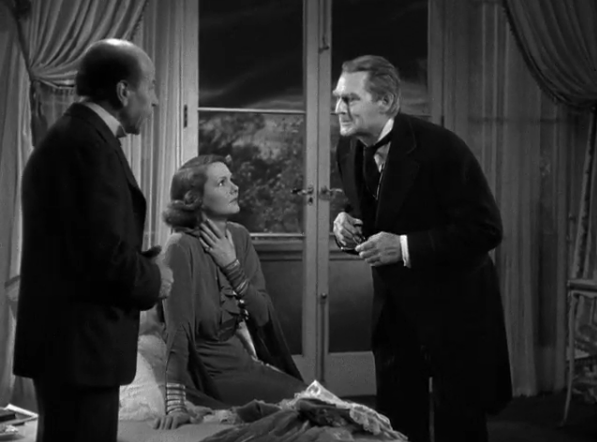
"Neumann" still expresses his reluctance that there are vampires walking the area around the "Borotyn" castle, but at "Irena's", "Fedor" enters in distress not remembering anything other than passing the old castle on his way to catch a train. He woke up very weaken and went back to "Irena's". There "Dr. Doskil" discovers the same bite marks on "Fedor's" neck and shows them to "Professor Zelen".
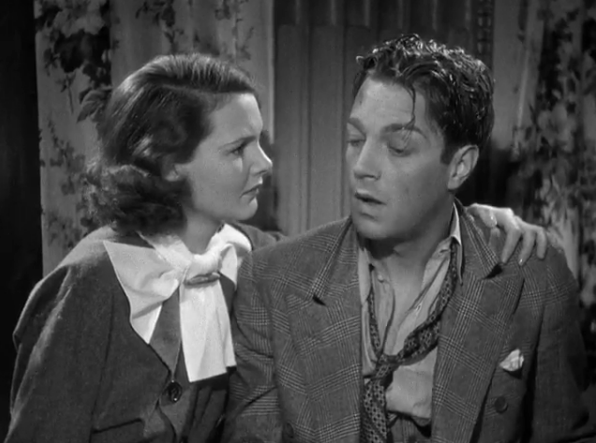
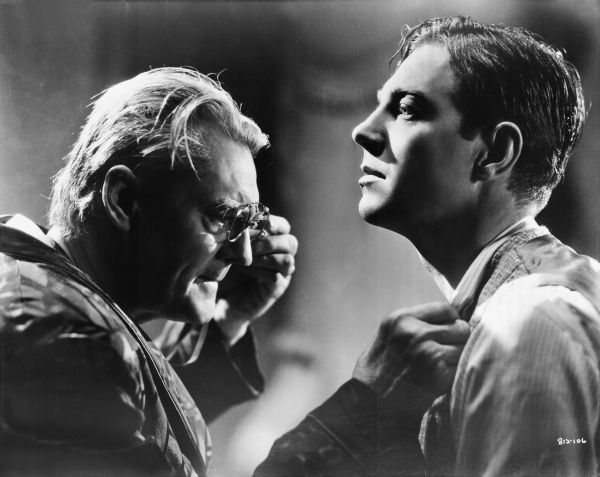
Next a wagon carrying "Maria", played by Leila Bennett, the new maid for the "Borotyn" estate passes the old castle and she sees "Luna" walking in the mist.

In an hysterical state "Maria" tells everyone about her encounter, but "Baron Otto" attempts to calm the new maid saying it was probably the Real Estate Agents showing the property and not vampires. Later that night "Irena" is found sitting in her garden in a trance and it is discussed that she encountered "Luna".
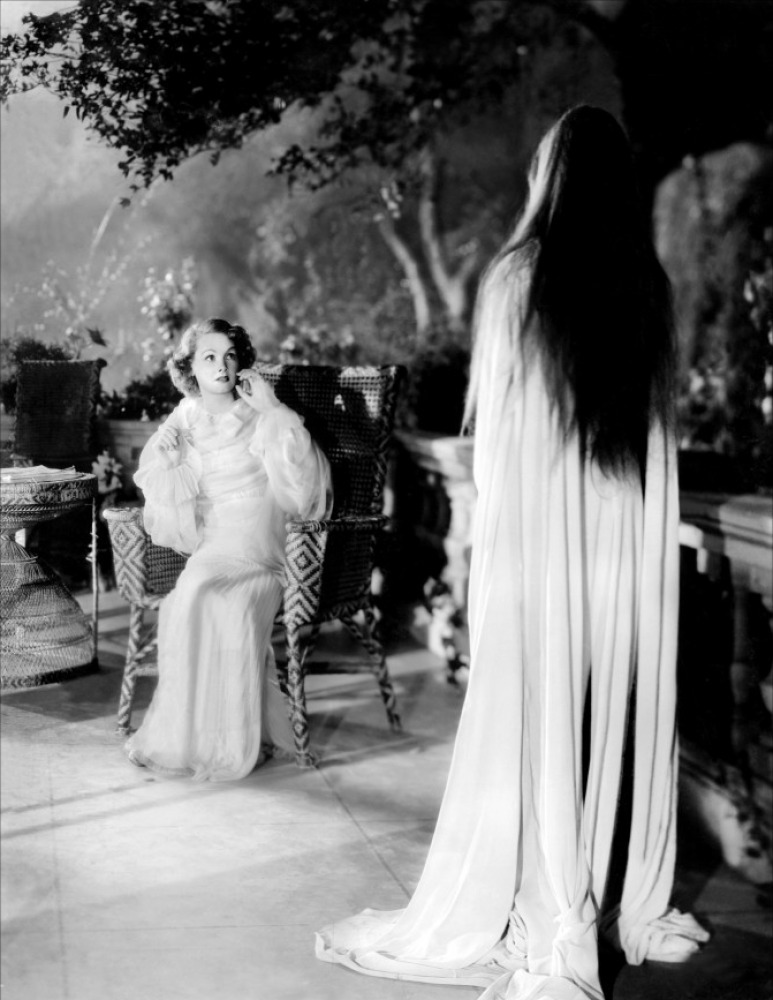
"Professor Zelen" now orders that bat-thorn, a flower that repels vampires, be placed throughout the house and all the windows kept shut and locked. A problem for "Inspector Neumann" occurs when a newly signed lease is found for the "Borotyn" castle. On it is the signature of "Sir Karell Borotyn" himself. How can that be from a dead man? It is decided to verify that "Sir Karell" is actually in his coffin. "Inspector Neumann", "Professor Zelen" and "Baron Otto" go to the "Borotyn Family Crypt".
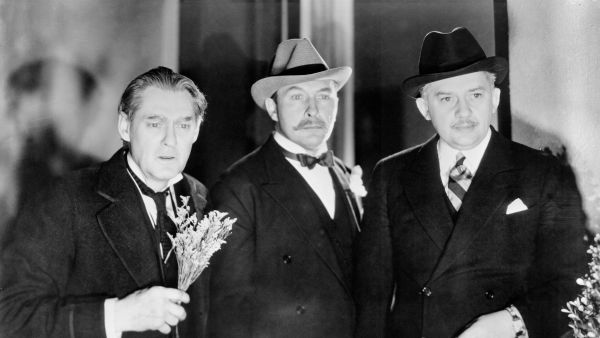
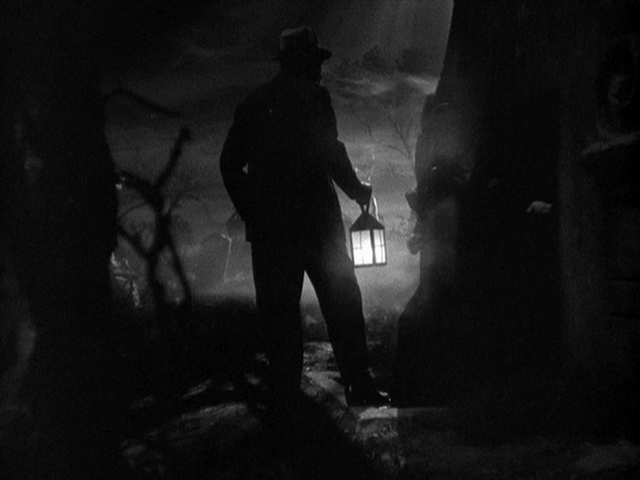
The group finds "Sir Karell's" coffin empty. They return to "Irena's" house and as the servants continue to spread more bat-thorn. A bat-flies into the house and becomes "Count Mora", but the vampire is driven off by the bat-thorn.

Discovering that the only way to destroy a vampire is to find their graves during the day, cut off their heads and place bat-thorn in the severed head and neck. It is decided that once again "Inspector Neumann", Professor Zelen" and "Baron Otto" will go into the castle, find the coffins of "Count Mora" and "Luna", and perform the deed, They leave "Irena's" house shortly before the dawn breaks to have the full use of daylight to locate the coffins.


Looking through one of the castle's window "Neumann" and the "Baron" not only see "Count Mora" and his daughter "Luna", but "Sir Karell Borotyn". Who goes to the organ and starts to play some of his favorite pieces.
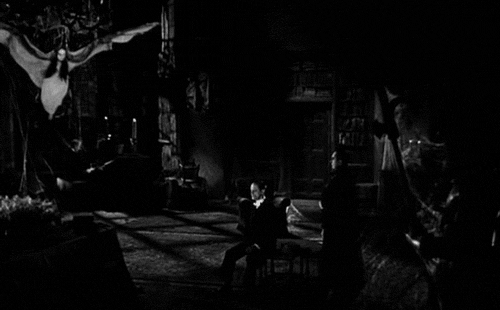

STOP!!!!!!!
Up to this scene the entire cast had a script to learn their lines from. However, they did not have the final pages and according to later interviews with Lionel Barrymore and especially Bela Lugosi and Carol Borland. Todd Browning never told the cast how the pictures ended until they had shot, to his satisfaction, everything that comes before the final sequences. Borland in several interviews said Browing claimed he thought knowing the her role and Lugosi's were not real vampires would impact negatively on their performances and possibly the others in the cast.
Continuing with the MGM Release
"Irena" arrives at the castle and finds "Professor Zelen" watching "Inspector Neumann" and "Baron Otto von Zinden". The two are still looking at the events inside the castle.
"Irena" now tells "Zelen" she can no longer continue with his plan to force "Baron Otto" to confess he murdered her father by frightening the very superstitious "Baron". Who believes in the tales of "Count Mora" and his daughter and now is viewing her father's living dead body. He advises her that it is time to stop the ruse.
"Professor Zelen" now hypnotizes the susceptible "Baron Otto". As, in the 1927 feature, the murderer, in his own mind, re-enacts the murder events and "Inspector Neumann" obtains the "Baron's" confession. As in the previous motion picture we have the ending with the actors, but with added dialogue that goes back to the audience watching Bela Lugosi.
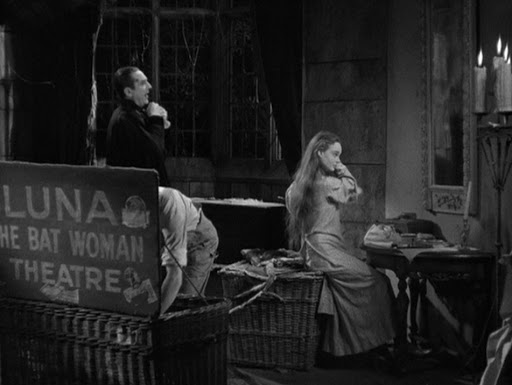
That dialogue is:
The Probable Actual Guy Endore Screenplay
There is no question that the screenplay seems to be about actual vampires, not actors, until "Irena" speaks to "Professor Zelen" at the castle.
To me, the idea, expressed by Borland, that Tod Browning didn't want to reveal the ending that the vampires were actors. So he held back those script pages to avoid harming the performances may not make sense by itself. It has to be based upon the presumption that not one of the actors, or the crew, had ever seen Tod Browning's and Lon Chaney's 1927 "London After Midnight", or, at least, were aware of the picture. Which I admit is still probable.
However. according to make-up artist Bill Tuttle in author Richard Bojarski's 1980 work "The Films of Bela Lugosi". Browning kept riding the actors by stating that:
What we do know is that Tod Browning brought in Bernard Schubert to rewrite scenes in the original screenplay. Schubert was known for rewrites rather than complete screenplays. I believe, based upon the character development and tone of the "Mark of the Vampire" prior to the ending, that Schubert was brought in to rewrite Endore's original ending. Possibly because of the problems Browning and MGM were facing from the Censors over the Production Code that was now in effect.
It is believed, by many film historians, that sequences between "Count Mora" and his daughter "Luna" were cut by the studio. A major theme in Guy Endore's screenplay did portray incest between the two. Also note that "Count Mora" has an "unexplained" gunshot wound on his forehead. Apparently, according to Endore, the "Count" murdered his daughter and was condemned for all eternity to be a vampire. He shot himself in the forehead in shame hoping to prevent this was occurring. A debate exists as to if those scenes were actually shot, or just appeared in Endore's screenplay. Carol Borland says they weren't shot, but----
IF the preview version ran 80 minutes, or even 75 minutes as some claim. The question is raised did it also contain a serious ending with "Mora" and "Luna" being actual vampires and destroyed as the earlier dialogue implied? That would fit Guy Endore's serious tone of writing for two other 1935 motion pictures. MGM's Peter Lorre version of "The Hands of Orlac" entitled "Mad Love" and Universal Picture's Boris Karloff and Bela Lugosi's "The Raven". Along with Guy Endore's 1936 screenplay for Tod Browning's own "The Devil Doll" with Lionel Barrymore. Others think they were comedy sequences. However, we will never know for sure, because of the editing done by MGM and the fact that the original complete Guy Endore screenplay appears lost. Although some argue the screenplay with the same ending as "London After Midnight" is the original. Then what did Bernard Schubert do?
A Summary of the MGM 60 Minute Screenplay as Released
Comparing the 1927 and 1935 screenplays, if this was really a remake. Besides the character name changes and the location change. One major immediate difference is that Lon Chaney's "Professor Edward C. Burke" aka: "Detective Burke" aka: "The Man in the Beaver Hat" has now become three separate roles played by three different actors.
Lionel Barrymore is "Professor Zelen", Lionel Atwill is "Police Inspector Neuman" and Bela Lugosi is "Count Mora".
The story starts with the discovering of the body of "Sir Karell Borotyn" in the family castle with two tiny puncture marks at his jugular vein. The attending physician, "Dr. Doskil", and "Sir Karell's" closest friend, "Baron Otto von Zinden", immediately suspect this is the return of the legendary Prague Vampire "Count Mora" and his daughter "Luna".
However, "Police Inspector Neumann" believes otherwise and is not one to believe local superstitions about the living dead. He was raised in Prague and knows all the tales of "Count Mora" and his daughter "Luna".
"Inspector Neumann" starts his own investigation of possible suspects starting with "Fedor Vincente". Who would gain a large sum of money by marrying "Irena Borotyn". As once her father was dead and his estate would pass to her. "Irene" does not believe "Fedor" would have anything to do with her father's death.

The Inspector next questions "Baron Otto" who has become the underage "Irena's" guardian and controller of the Estate. "Neumann" moves to "Dr. Doskil's" office and questioning of a local innkeeper. Who also believes that "Count Mora" and "Luna" are real and claims to have seen them as bats.
One year now passes without any conclusion by "Inspector Neumann" in the death of "Sir Karell Borotyn". The idea that he was killed by "Count Mora" and his daughter remain. "Irena Borotyn" now lives in another house near the castle. The "Borotyn" castle is up for sale as she does not want to live in the place her father died in.
By now the famous Occult and Vampire expert "Professor Zelen" has heard about the return of "Count Mora" and his daughter. He goes to "Inspector Neumann" expressing his own belief that the Count is real and is a danger to "Irena". He also talks to "Baron Otto", "Fedor" and "Dr. Doskil" and of course "Irena" about his belief.

"Neumann" still expresses his reluctance that there are vampires walking the area around the "Borotyn" castle, but at "Irena's", "Fedor" enters in distress not remembering anything other than passing the old castle on his way to catch a train. He woke up very weaken and went back to "Irena's". There "Dr. Doskil" discovers the same bite marks on "Fedor's" neck and shows them to "Professor Zelen".


Next a wagon carrying "Maria", played by Leila Bennett, the new maid for the "Borotyn" estate passes the old castle and she sees "Luna" walking in the mist.

In an hysterical state "Maria" tells everyone about her encounter, but "Baron Otto" attempts to calm the new maid saying it was probably the Real Estate Agents showing the property and not vampires. Later that night "Irena" is found sitting in her garden in a trance and it is discussed that she encountered "Luna".

"Professor Zelen" now orders that bat-thorn, a flower that repels vampires, be placed throughout the house and all the windows kept shut and locked. A problem for "Inspector Neumann" occurs when a newly signed lease is found for the "Borotyn" castle. On it is the signature of "Sir Karell Borotyn" himself. How can that be from a dead man? It is decided to verify that "Sir Karell" is actually in his coffin. "Inspector Neumann", "Professor Zelen" and "Baron Otto" go to the "Borotyn Family Crypt".


The group finds "Sir Karell's" coffin empty. They return to "Irena's" house and as the servants continue to spread more bat-thorn. A bat-flies into the house and becomes "Count Mora", but the vampire is driven off by the bat-thorn.

Discovering that the only way to destroy a vampire is to find their graves during the day, cut off their heads and place bat-thorn in the severed head and neck. It is decided that once again "Inspector Neumann", Professor Zelen" and "Baron Otto" will go into the castle, find the coffins of "Count Mora" and "Luna", and perform the deed, They leave "Irena's" house shortly before the dawn breaks to have the full use of daylight to locate the coffins.


Looking through one of the castle's window "Neumann" and the "Baron" not only see "Count Mora" and his daughter "Luna", but "Sir Karell Borotyn". Who goes to the organ and starts to play some of his favorite pieces.


STOP!!!!!!!
Up to this scene the entire cast had a script to learn their lines from. However, they did not have the final pages and according to later interviews with Lionel Barrymore and especially Bela Lugosi and Carol Borland. Todd Browning never told the cast how the pictures ended until they had shot, to his satisfaction, everything that comes before the final sequences. Borland in several interviews said Browing claimed he thought knowing the her role and Lugosi's were not real vampires would impact negatively on their performances and possibly the others in the cast.
Continuing with the MGM Release
"Irena" arrives at the castle and finds "Professor Zelen" watching "Inspector Neumann" and "Baron Otto von Zinden". The two are still looking at the events inside the castle.
"Irena" now tells "Zelen" she can no longer continue with his plan to force "Baron Otto" to confess he murdered her father by frightening the very superstitious "Baron". Who believes in the tales of "Count Mora" and his daughter and now is viewing her father's living dead body. He advises her that it is time to stop the ruse.
"Professor Zelen" now hypnotizes the susceptible "Baron Otto". As, in the 1927 feature, the murderer, in his own mind, re-enacts the murder events and "Inspector Neumann" obtains the "Baron's" confession. As in the previous motion picture we have the ending with the actors, but with added dialogue that goes back to the audience watching Bela Lugosi.

That dialogue is:
This vampire business, it has given me a great idea for a new act! Luna, in the new act, I will be the vampire! Did you watch me? I gave all of me! I was greater than any REAL vampire!Also note that it is "Luna" who owns the acting company. As her truck reads:
Luna The Bat Women Theatre
The Probable Actual Guy Endore Screenplay
There is no question that the screenplay seems to be about actual vampires, not actors, until "Irena" speaks to "Professor Zelen" at the castle.
To me, the idea, expressed by Borland, that Tod Browning didn't want to reveal the ending that the vampires were actors. So he held back those script pages to avoid harming the performances may not make sense by itself. It has to be based upon the presumption that not one of the actors, or the crew, had ever seen Tod Browning's and Lon Chaney's 1927 "London After Midnight", or, at least, were aware of the picture. Which I admit is still probable.
However. according to make-up artist Bill Tuttle in author Richard Bojarski's 1980 work "The Films of Bela Lugosi". Browning kept riding the actors by stating that:
Mr. Chaney would have done it better.Which to me does raise the probability that Tod Browning mentioned the 1927 film in his rants.
What we do know is that Tod Browning brought in Bernard Schubert to rewrite scenes in the original screenplay. Schubert was known for rewrites rather than complete screenplays. I believe, based upon the character development and tone of the "Mark of the Vampire" prior to the ending, that Schubert was brought in to rewrite Endore's original ending. Possibly because of the problems Browning and MGM were facing from the Censors over the Production Code that was now in effect.
It is believed, by many film historians, that sequences between "Count Mora" and his daughter "Luna" were cut by the studio. A major theme in Guy Endore's screenplay did portray incest between the two. Also note that "Count Mora" has an "unexplained" gunshot wound on his forehead. Apparently, according to Endore, the "Count" murdered his daughter and was condemned for all eternity to be a vampire. He shot himself in the forehead in shame hoping to prevent this was occurring. A debate exists as to if those scenes were actually shot, or just appeared in Endore's screenplay. Carol Borland says they weren't shot, but----
IF the preview version ran 80 minutes, or even 75 minutes as some claim. The question is raised did it also contain a serious ending with "Mora" and "Luna" being actual vampires and destroyed as the earlier dialogue implied? That would fit Guy Endore's serious tone of writing for two other 1935 motion pictures. MGM's Peter Lorre version of "The Hands of Orlac" entitled "Mad Love" and Universal Picture's Boris Karloff and Bela Lugosi's "The Raven". Along with Guy Endore's 1936 screenplay for Tod Browning's own "The Devil Doll" with Lionel Barrymore. Others think they were comedy sequences. However, we will never know for sure, because of the editing done by MGM and the fact that the original complete Guy Endore screenplay appears lost. Although some argue the screenplay with the same ending as "London After Midnight" is the original. Then what did Bernard Schubert do?

















No comments:
Post a Comment